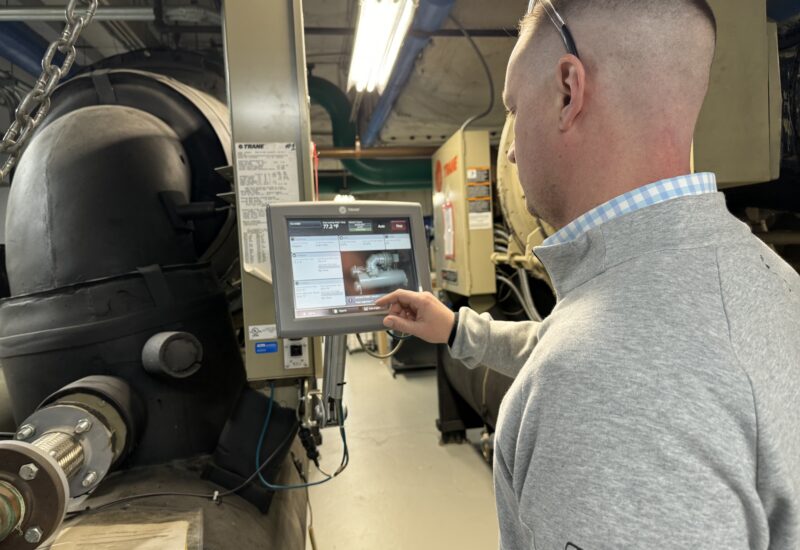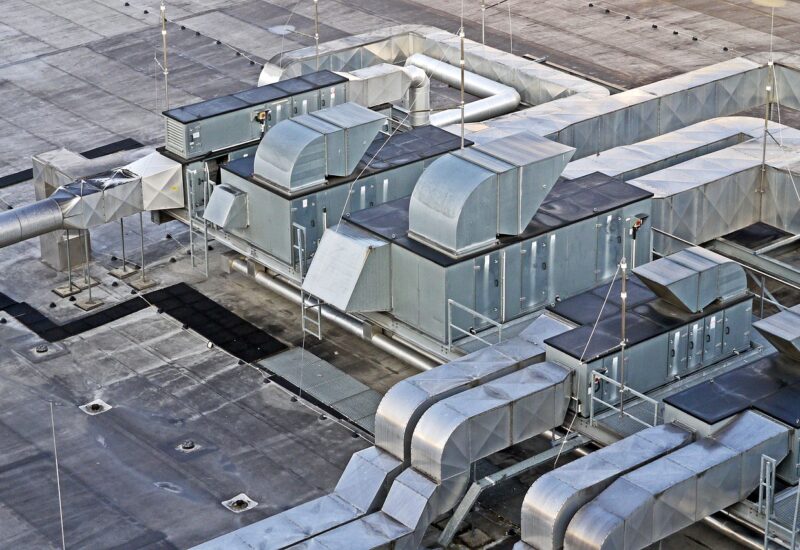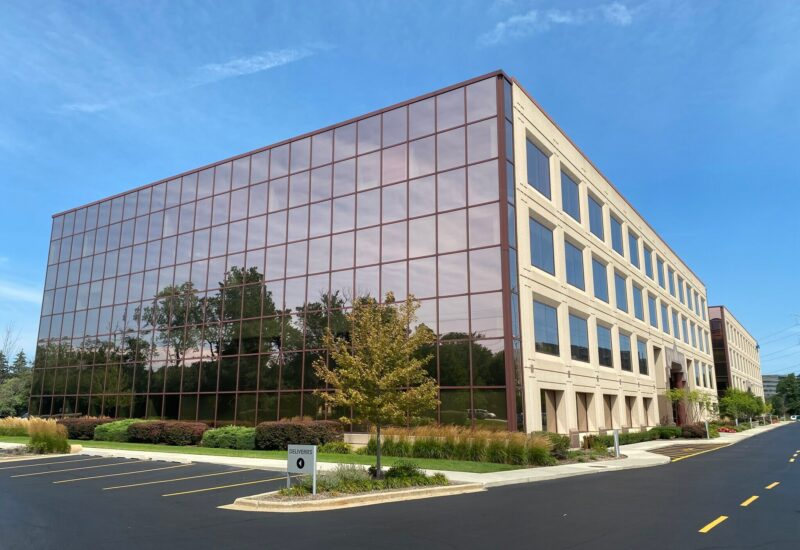On April 19, 2022, the Montgomery County Council voted unanimously to pass Bill 16-21, the new Building Energy Performance Standard (BEPS) Law in Montgomery County, Maryland. County Executive Marc Elrich signed Bill 16-21 into law on May 2, 2022, which will take effect on July 31, 2022. This article will give an overview of the recent changes to the BEPS legislation, how BEPS is measured, and the future roadmap for benchmarking and BEPS in Montgomery County.
Since our last Montgomery County BEPS legislation blog, changes have been made to the exemptions and waiver criteria, definitions of covered buildings, and the timeline for benchmarking and BEPS. There are aspects of this policy that are subject to change since the county is adding more details to the existing framework of the policy in alignment with the county’s goal to reduce 80% of greenhouse gas emissions by 2027 and 100% by 2035. Moreover, a focus of the legislation is to include allowances and extensions for under-resourced buildings such as affordable housing and nonprofit-owned buildings.
Bill 16-21 establishes four major components:
[1] Add properties covered under the benchmarking laws
[2] Phase in Building Energy Performance Standards
[3] Establish the Building Performance Improvement Board
[4] Develop Benchmarking/BEPS regulations by December 31, 2023
Benchmarking and BEPS Building Coverage
Since 2016, property owners have been required to benchmark the energy use of their non-residential buildings that are greater than 50,000 gross square feet in the ENERGY STAR Portfolio Manager for public disclosure, through the Energy Benchmarking Law. Bill 16-21 expands the benchmarking energy use to non-residential buildings greater than 25,000 gross square feet, adds multifamily residential buildings, and includes some previously exempted building types. Montgomery County has divided covered buildings into five distinct groups. The addition of the three new groups will increase coverage to approximately 1,900 buildings in Montgomery County, which is 40% more of the County’s commercial building area.
What is currently covered by the Benchmarking Law:
- Group 1: County and privately owned non-residential buildings that are 250,000 gross square feet and greater
- Group 2: County and privately owned non-residential buildings that are 50,000-250,000 gross square feet
What the Benchmarking Amendments added:
- Group 3: County and privately owned non-residential buildings that are 25,000-50,000 gross square feet. It will include previously exempted commercial buildings of all sizes with at least 10% warehousing, self-storage, and manufacturing/industrial uses.
- Group 4: Multifamily buildings 250,000 gross square feet and greater
- Group 5: Multifamily buildings 25,000-250,000 gross square feet
In addition, the County updated the definition of a covered building. Bill 16-21 Amended Covered Building now is defined as a single building that can be individually metered and share no interior common area; or a group of buildings that share an energy meter, have a common heating or cooling system, share interior common areas, or otherwise cannot attribute energy use to a single building. Every single building is being reported individually with its own baseline and standard. If you previously reported your parcel as one building or property, you may opt to begin reporting each building individually to potentially assign it to Group 3 to start BEPS compliance later.

The Benchmarking Amendments update the exemption and waiver criteria for property owners as follows:
- by usage type:
Now: more than 50% of the total gross floor area must be used for industrial uses and
- where the majority of energy consumption is for manufacturing, or
- the generation of electric power or district thermal energy to be consumed offsite, or for other process loads.
Before: where buildings with at least 10% of warehousing, self-storage, and manufacturing/industrial uses were previously exempted.
- by occupancy
Now: on average, less than one full-time-equivalent employee occupied the building during the calendar year being reported.
Before: This replaces the exemption if the average physical occupancy is less than 50% throughout the calendar year
How is BEPS measured?
Montgomery County is using the site energy use intensity (EUI) standard as a performance metric to gauge if a building is in compliance with BEPS. Site EUI measures all energy use used on-site at the building annually divided by gross floor area (kBtu per gross square feet per year).
To evaluate if the site EUI target is achieved, such as the interim periods, a building will be measured using normalized net site EUI to assess building performance. In addition, Montgomery County is accepting renewable energy credits that properties pursue as an allowance toward the BEPS target. The equation to calculate a property normalized net site EUI is as follows:
Timeline for Benchmarking and BEPS
Newly covered buildings will benchmark for three years and the building-specific baseline is based on the average of the two highest site EUI recorded during this period. Properties will report annually on June 1 with BEPS progress assessed during the interim period after five years to determine if they are meeting their energy reduction targets. Buildings are given a long-term site EUI target which must be achieved after 10 years, this is the final compliance deadline. Site EUI targets are set for each building type. Penalties for non-compliance are still in development.

The benchmarking for newly covered buildings is pushed back a year from the originally proposed bill, county and privately owned non-residential buildings that are 25,000-50,000 gross square feet (Group 3) and multifamily buildings 250,000 that are gross square feet and greater (Group 4) will begin to benchmark calendar year (CY) 2022 data, which must be submitted by June 1, 2023. Smaller multi-family buildings 25,000-250,000 that are gross square feet (Group 5) will begin reporting their first benchmark calendar year (CY) 2023 data, which must be submitted by June 1, 2024.
Properties in Groups 1 and 2 that have already been benchmarking (County and privately owned non-residential buildings that are 50,000 gross square feet and above) will receive their baselines in the second half of 2023 and begin on the BEPS path on January 1, 2024. Once they have received their baselines they will have five years until their first interim target, then another five years until their final target.

Building Performance Improvement Plans (BPIPs)
If a property cannot reasonably meet the interim standard or final performance standard due to economical infeasibility or other circumstances beyond the owner’s control, the county may accept a Building Performance Improvement Plan (BPIP) that documents cost-effective energy measures available in that building and establishes a timeline for carrying them out. A property owner who follows their approved BPIP is still in compliance and will not face any penalties.
The BPIP must include:
- Documentation of economic infeasibility or circumstances beyond the owner’s control
- List of potential improvements, measures, including energy savings and cost-benefit analysis
- Plan and timeline for achieving energy improvements to the building performance that will provide cost-effective energy savings, including estimated savings of implementing all cost-effective measures
- Procedures for correcting any noncompliance or deviation from the plan

Building Performance Improvement Board (BEPS Advisory Board)
The newly established Building Performance Improvement Board will advise on the implementation of BEPS. The Building Performance Improvement Board is comprised of 15 voting members serving 3-year terms to advise the Department on the implementation of BEPS. They will be tasked with drafting regulations, reviewing building performance improvement plans, handling situations of change in building ownership or property use type, and developing guidance for unique building situations. Each member of the Board is a resident of Montgomery County or a member of the governing body or staff of an entity doing business in the County.
Summary
Montgomery County Council is working with building owners, investment professionals, contractors, and more to further improve the structure and implementation of BEPS in the county. In this blog, we covered the new groups added to the benchmarking amendment, an updated definition of covered buildings, an update to the exemption and waiver criteria for property owners, a timeline of implementation of benchmarking and BEPS, an alternative compliance plan for building owners who are unable to reach their interim goals, and the establishment of the BEPS Advisory Board. Montgomery County Council and the newly created BEPS Advisory Board will provide updates on aspects of the legislation which are subject to change.
Have a question about the Montgomery County BEPS or the recent policy changes? Contact us!








